[Katie Schumacher, Wisconsin Historical Museum]
Today we are pleased to introduce Peter Shrake as part of the Wisconsin Historical Museum’s History Sandwiched In lecture series. The opinions expressed today are those of the presenters and are not necessarily those of the Wisconsin Historical Society or the museum’s employees.
Peter Shrake is a lifelong resident of Wisconsin. He earned his master’s degree in history from the University of Wisconsin-Eau Claire and a master’s degree in library and information studies from the University of Wisconsin-Madison. Since 2011 he has been the archivist at Circus World. Peter’s book, The Silver Man: The Life and Times of Indian Agent John Kinzie, was recently published by the Wisconsin Historical Society Press. He lives in Baraboo with his wife Kim and his sons Ethan and Ben. Here today to talk discuss with us the life of John Kinzie, please join me in welcoming Peter Shrake.
[applause]
[Peter Shrake, Author, The Silver Man: The Life and Times of Indian Agent John Kinzie]
Thank you. And thank you all for coming out this afternoon. It’s nice to see a – a nice crowd to talk to today.
If you get a chance to drive through Portage, just to the east of Portage there is a museum. And it’s – its a relatively small museum. Quiet place. And something that’s kind of off the road. You drive by, if you would miss it. It is the Indian Agency House Museum, and it is a building that was built by John Harris Kinzie in the summer of 1832. It is a remarkable structure for a number of different reasons. First off, is its actual architectural construction and design. It is perhaps one of the oldest buildings in Wisconsin, although there is some that may debate me on that. But when it was preserved as a museum by the Colonial Dames in 1934, it was on the outskirts of Portage, and there was still no running water or electricity to the site and the house had been abandoned for a number of years, which made it really remarkably well preserved. And through the efforts of the Colonial Dames, today, if you go and visit that house, you do feel like you’re walking back into 1832. So much of that site has really remained intact for over the years, over the decades.
It’s also notable in that amongst the different buildings built by the federal government for the Office of Indian Affairs to administer their Indian policy, it is probably the only Indian Agency house that still remains on its original site pretty much intact to its original configuration. So, that is quite unique. It is also unique in that it is one of the tangible, really only tangible links to this gentleman, the man who we’re going to be talking about today –
[slide titled – The Silver Man – The Life and Times of John H. Kinzie – featuring a black and white portrait photo of Mr. Kinzie]
– John Harris Kinzie. Also had the nickname the Silver Man, which we’ll talk about why he got that nickname a little bit later in our talk today.
But John Harris Kinzie was an interesting character on the frontier. Someone who knew so many notable figures of his day, saw many great public events of his day as well. And he built that house in the summer of 1832.
So, who is –
[new slide titled – Why John Kinzie? – still featuring his portrait photo but now added to this slide is an 1838 portrait of his wife and child, Juliette and Nellie Kinzie as well as a photo of Juliettes manuscript for Wau-Bun, Early Day in the Northwest between them]
– John Harris Kinzie? That’s, of course, the topic of the book that the Wisconsin Historical Society very generously published this spring. Who is he, and why is he somebody that we’d really want to know?
Well, he has a link to another very important aspect of Wisconsin history, and that is another book written by his wife. This book, Wau-Bun: The Early Day in the Northwest, and this is a painting of Juliette Kinzie in 1838 around the time that she would have lived at Portage in that house with John.
Wau-Bun is a significant book for Wisconsin history, and for anybody who is studying western Great Lakes, Jacksonian Indian policy –
[Peter Shrake, on-camera]
– frontier history, material culture. It’s one of those books that is considered a classic of Wisconsin history. If you are writing a thesis, or a dissertation, or an article or a book on the subject, chances are you’re gonna cite this book, and many have already. So, it’s considered an important resource on studying this period in Wisconsin and U.S. history. Provides this important window into this time.
Wau-Bun is a recollection of Juliette’s time at the Portage, at the Indian Agency house. She arrived there in 1830 as the – the newlywed bride of John Harris Kinzie. John had already been at the Portage for about a year. And so, it’s her story of her time there. And as a result, John Harris Kinzie appears in this book –
[return to the – Why John Kinzie? – slide, described above]
– as a significant character, but he is still a secondary character because Wau-Bun is really Juliette’s story of her time on the frontier. And that’s where, for me, my interest and story really begins with kind of figuring out the story of John Kinzie –
[Peter Shrake, on-camera]
– and why ultimately, I wrote the book on him.
My background, although it may seem weird that I’m – as an archivist of – of Circus World Museum, but why would I write a book on an Indian agent? Seems not connected to what I do for my – for a living. My long-time interest has been in Jacksonian Indian affairs and – and Jacksonian Indian policy. John Kinzie fits within that era. And when you read Wau-Bun, I kept thinking, There’s got to be more to this story. There’s just – theres key pieces that are missing. And so, this led to a presentation that I delivered at the Indian Agency House Museum in 2010, which in turn allowed me to write an article, led to writing an article for the Magazine of History and finally the book, which hopefully some of you would buy and read today.
But it’s because of Juliette, though, that really, we know anything about John. And this is, in a way, a bit of a – of a kind of ironic because in his time period, John was a very well-connected man. This is a guy who knew personally the territorial governor of Michigan, Lewis Cass, who later went on to become not only Secretary of War but a presidential nominee. This was a man who knew the leaders of the American Fur Company up at Mackinac Island, who knew many Indian chiefs of his day, especially in and around Wisconsin. This is a man who saw many of the great treaty negotiations, witnessed the Black Hawk War firsthand. So, who was really an important figure on the frontier. Juliette, given that time period, was essentially just John’s wife, and was not really – she was an important person, but John was the principle figure in that relationship. Now, today, the roles are switched. When people think of the name Kinzie, they often think of Juliette and her book, Wau-Bun, and her husband John is largely forgotten about.
But it’s as a result of Juliette, though, that we do know anything about John because not only did she write this book, Wau-Bun, printed in 1856, she also wrote a – an historical sketch about him, printed and published by the Chicago Historical Society in 1868.
[slide titled – John Kinzies World – featuring an illustrated painting of Detroit circa 1803, a map of the Midwest from the 1800s that has all the Native American territories demarcated on it, and a painting of Chicago circa 1812]
Why John Kinzie? In a sense also, well, because of the importance of the people that he knew but there are challenges in researching the life of John Kinzie. And the first and foremost is that none of his personal papers are known to exist. The family moved to Chicago after they left the Portage, and it was in 1871 that the family was still living there, and all their personal belongings and papers were destroyed, we believe, in the Chicago fire of 1871. So, we have Wau-Bun as an account of John Kinzie. We have some public records from the Office of Indian Affairs. We have anecdotal accounts of John Kinzie. But the study of the life of John Kinzie must become, in essence, a – a study of his times as well. The world into which John Kinzie lived.
And this is the world that John Kinzie lived. He was a product of the Great Lakes frontier. For the most part, he lived the bulk of his life in around Illinois and Wisconsin and Michigan. He was born in Detroit in 1803. And within a – to a family that – to a father that was well established in the fur trade. His father, John Kinzie, Senior, started off his life as a silversmith in Montreal, but quickly transitioned into the fur trade when he realized there was more money to be made in that line of work.
John Kinzie’s father lived in the Indiana frontier and eventually the Illinois frontier, moving from place to place, towns like Kekionga, which is now where Fort Wayne, Indiana, is now. Bouncing back between Kekionga and Detroit, and eventually migrating to Chicago. It was in –
[Peter Shrake, on-camera]
– one of those different migrations that the family was living in Chicago when his son John was born. But in the years leading up to the War of 1812, John Kinzie and his family ultimately relocated to Chicago. And at this point, his father developed a relationship with the American Fur Company as a fur trader. Along the way, he does start work, this is John’s father, does do some work for the government as an interpreter for Lewis Cass and has a – a kind of an almost an honorary title of an Indian agent for a while at the Chicago area. But he also is developing a relationship with the different Indian tribes in the area, especially the Potawatomi. And this is crucial because in – in the opening year of the War of 1812, there’s this great momentous event that happens that causes great disruption within the Kinzie family, and that is the Chicago battle, or massacre, of the Fort Dearborn garrison at – at Detroit. I’m sorry, not at Detroit but at Chicago itself. And the – this massacre at Chicago is one of the first of a series of great events that young John Kinzie witnesses throughout the – throughout his life.
At the beginning of the War of 1812, the United States is really, again, a very young nation, just kind of coming into the western Great Lakes area. Great Britain is still a very powerful force in this area, and at the onset of the war, Great Britain, with its various different allies of Indian nations, strikes out and essentially attacks the various different American outposts on the – on the Great Lakes frontier. Mackinac Island quickly falls. And the Army – U.S. Army garrison at Detroit orders all the various garrisons to be withdrawn, to kind of come back into Detroit, including this small garrison at Chicago.
John Kinzie’s father does get some forewarning of a potential attack against the Chicago garrison by the local Potawatomi. He’s had business relationships with them over the years, and he tries to warn the post commandant that if you withdraw from Chicago and not remain within the safe confines of the fort that – that you may very well be attacked.
But the post commandant, Nathan Held, feels that his orders from the general in Detroit supersedes any regional concerns, and so he pulls the garrison out of Chicago, and within a mile of Fort Dearborn, the family – the – the whole garrison is attacked and many of the garrison and their families are killed. John Kinzie through, fortunately, his forewarning of the attack, had put his family on boats, and they were actually out in Lake Michigan when the attack occurred. And so, they saw and heard much of the actual attack that occurred, but they survived the battle. And John, young John Harris Kinzie is about nine years old at this time. And so, he witnesses this horrific event, but they survive it.
They eventually rowed back to shore where they’re held captive by the Potawatomi for a while, but they’re able to essentially secure their freedom. And the family beats a – kind of a hasty retreat back to Detroit, one of the only kind of safe havens for them at this point. But the family is destitute. John’s father, who was in the Indian trade, so he was in the fur trade, he was doing all sorts of other business with – with them. All of his property is destroyed as a result of the – of the attack on Chicago. And so, for the next couple years the family ekes out a rather precarious existence in Detroit, kind of waiting for the war to end.
And here we have young John Kinzie growing up. Now, we do not know what education he actually has. Detroit has a limited educational system. There is no real public education that we know of. Some schools kind of come and go. This is still very much the frontier, but we are already starting to see signs that John Harris Kinzie has some natural intellect and natural ability. By the time he arrives at Detroit, he has already mastered several Indian languages: Dakota, Potawatomi, and I believe it’s Ojibwe. And that hes already – hes already actually learned some Otoe. He ultimately learns six Indian languages in the course of his lifetime, but by the time he is in his early teens, he has already mastered three of them. And so, even though he’s maybe getting a rudimentary education, he is absorbing the world that is around him and certainly has a very active mind and he can grasp these different languages.
After the end of the War of 1812, the family does return to Chicago, to kind of – and John’s father reestablishes himself in the Indian trade. He has – he has made connections with the American Fur Company, which we believe actually probably happened before the War of 1812. But he essentially goes back into the fur trade, and he uses his connections with the American Fur Company to get his son an apprenticeship with this major company. And so, at the age of 16, in 1818, John Harris Kinzie leaves home, leaves Chicago, and goes and lives up at Mackinac Island.
This is an important point for him. Mackinac Island is the center of operations for the American Fur Company in the western Great Lakes. And for those not familiar with the American Fur Company, this is probably the United States’ first great monopolistic empire. John Jacob Astor, out of New York, has built this mammoth business operation that dominates the fur trade, which is this huge economic driver for all things on the frontier. And its oper – base of operations for what is known as the Northern Department of the American Fur Company, which covers the Great Lakes and heads west out towards the Rocky Mountains, is at Mackinac Island, at that top point of Lake Michigan. And there, there are two main lieutenants for John Jacob Astor at Mackinac Island. One is Ramsay Crooks and the other is Robert Stuart, an old Scotsman who had – was an early business associate of John Jacob Astor, had lived for many years on the frontier, was kind of a tough, irascible, cantankerous, old fellow. And these are the two men that John Harris Kinzie goes to work for and actually live with.
We here now get some actual early accounts of John Harris Kinzie from these two men who are writing back to Kinzie’s father. I’m gonna back up here for just one quick second. In addition to pointing out the map, which gives a sense of where he lives, the two images that we have here are of the communities that he grew up with as a young man. This was Detroit in 1803. A very small, little town compared to the big city that it was on the outskirts of a fort. In Detroit, I’m sorry, Chicago, around 1812, Chicago is nothing like the mammoth city that it is today. It is Fort Dearborn and a few buildings. No more than maybe 100 people are living in Chicago in the years leading up to and after the War of 1812. So, small frontier communities is the – are the world that John Kinzie is born into and lives in.
So, at the age of 16 he goes up to Mackinac Island, and he works for these two gentlemen, Ramsay Crooks and Robert Stuart. And, as I mentioned, we actually have some account of John Kinzie at this time, especially from Ramsay Crooks who’s writing the letters to John’s father. But he ends up working for Robert, directly for Robert Stuart, and actually living in the household, living with the Stuart family.
He is not, though he is engaged in the fur trade, he is not working out in the field. He is not a part of what is known as the outfits or brigades. These teams of fur traders with their voyagers going up and down the rivers and into the wilderness, interacting with the different Indian tribes or –
[slide titled – The Fur Trade: Mackinac Island – featuring six images – the first a portrait photo of Robert Stuart, the second a photo of a portrait painting of Ramsay Crooks, The third an illustration of Mackinac Island circa 1820, the fourth a painting of a fur trade outfit out in the field with their tents and campfires, the fifth an image of a store voucher signed by John Kinzie in 1820, and the last a photograph of the American Fur Company Store on Mackinac Island]
– actually trapping for the furs themselves. He is not actually out in the field. He stays back at the home base as a clerk working for the company. His early jobs are to essentially, when the – when the brigades come on in, he counts their furs, repacks their furs. He is an accountant, essentially, and making sure that they’re properly weighed, and the proper accounting is done. And its – its a – and working directly under Robert Stuart, he learns about good bookkeeping. And Ram – and Robert Stuart is a very exacting boss. There are accounts of where literally John Kinzie is working up to the late hours, entering into the accounts, into the ledger books, and he presents his material to Robert Stuart for approval, Stuart rips it up in front of him and tells him to go back and correct it all again. That’s Robert Stuart.
He’s also learning lessons of life from the Stuart –
[Peter Shrake, on-camera]
– family as well. There’s an account of a – of a teenager John Kinzie, kind of a petulant teenager, who, walking down the street one day, essentially casts some insult to an old, retired voyager. And you can imagine, you know, being kind of a – a – a – a teenager doing something like that. And the old man complains to – to Robert Stuart, who feels that young Kinzie needs a little bit of a lesson taught. And so, he sets it up that Kinzie is walking by again and sees this old voyager, and Kinzie, again, you know, makes some disparaging comment, and the old man starts pummeling John Kinzie and essentially thrashes him. In the meanwhile, there’s Robert Stuart up on a second-story building watching below, watching this whole scene and kind of chuckling as it’s occurring. That’s Robert Stuart.
But he also could have a very endearing side. Though he could be a quite physically violent man, he could also be a very caring man and was – took very good care of the people under his care. And it’s also in the household, we believe from Mrs. Stuart, that John Kinzie continued his lessons in reading and perhaps even learned to play the violin. So, it was by no means an unpleasant livelihood that he now had with the Stuarts –
[return to the slide – The Fur Trade: Mackinac Island – described above]
– and he had an affection with them that remained pretty much for the rest of his life. And so, he’s making more connections at this point.
We have a lovely image here of Mackinac Island in 1820, which shows what it would have looked like when Kinzie was there. The other image that we have up in the corner is a building that you can see as well today associated with Kinzie, and that is at Mackinac Island just below the fort that is there, and that is the American Fur Company store. In Kinzie’s time, it would have been at least two, if not three, stories. And at one point, Kinzie runs that store. His abilities are, his natural abilities start shining through at an early day, and the letters from Ramsay Crooks and the – the documentation we have from Robert Stuart show that they are impressed. Even though this is a young man that maybe needs a lesson or two taught now and then, is an impressive young man. And within about two years, he’s given the role of being, essentially, the chief of the – of the company store on Mackinac Island. And so, he finishes out his apprenticeship in charge of that store. And one of the few documents that we have of John Kinzie is from that store, and that is the pay voucher which is at the Newberry Library in Chicago. There’s actually two of these. And it’s just a voucher for some bread, but it’s one of the rare examples of actually something in handwriting from John Harris Kinzie.
But he is at Mackinac Island for about five years. That’s the length of his apprenticeship. And the quality of his work is enough that when the apprenticeship is done, the company hires him out as a clerk in his own right, as a full-time employee –
[new slide titled – The Fur Trade: Prairie Du Chien – featuring four images – the first is of three pages of John Kinzies Ho Chunk Dictionary from 1826, the second is a painting of the signing of the Treaty of 1825 between Native American tribes and the U.S. government, the third is a photo of a recreation of the Fur Company Store, and the last is an illustrated drawing of Prairie Du Chien circa 1829]
– and sends him to Prairie du Chien where the American Fur Company has one of its many outposts that it has scattered throughout the western frontier. And there is a chief trader there, Joseph Rolette, who he goes to work for.
And if you go to Villa Louis, actually not too far from the mighty Dousman Hotel, is the site where the American Fur Company offices would have been. But there’s nothing there now –
[Peter Shrake, on-camera]
– it’s a vacant plot of land, but you can actually see the site where Kinzie would have worked. And it’s at Prairie du Chien that he is now a young man. He’s now a man of some substance. He can sign his name to petitions. But he’s also – he’s working directly for the American Fur Company. He helps found a Sunday school with some of the wives of the fort, Fort Crawford nearby, but he is also continuing his education. He studies the dialect of the Ho-Chunk nation and builds a dictionary. Probably the first dictionary of the Ho-Chunk language is – is written by him.
It is also at Prairie du Chien that he witnesses what may be another major, well certainly is a major public event, but another one of the many events that he witnesses, and that is the Treaty of 1825. This is one of those events that is noted, kind of as a footnote in most books on –
[return to the – The Fur Trade: Prairie Du Chien – slide, described above]
– Wisconsin history. It’s regarded as a significant event, but also is not heavily written about. This is an event that has far-reaching implications for any Native tribe living in the Upper Mississippi River Valley and the western Great Lakes. We do not know if Kinzie was there during this treaty negotiations. The site of that treaty is, again, you can see the site. If you go to Villa Louis and you see the Fort Crawford blockhouse, there’s a stand of pines just to the north of the Fort Crawford blockhouse, that is about where this lithograph down in the corner actually would have taken place. So, one of those blockhouses off to the – to the left of the litho probably is that recreated blockhouse that you can actually see today. But as, Kinzie’s name does not appear on any of the documents associated with the treaty.
[Peter Shrake, on-camera]
None of the treaty reports, none of the treaty journals. Not on the treaty itself as a witness. But he is in Prairie du Chien at that time and given that that treaty had such a far-reaching impact and would have had a big impact on the businesses of the American Fur Company, it’s absolutely impossible not to imagine he was not there.
And this is an event that – what the treaty does is it’s being convened for a number of different reasons. It’s not a land cession treaty. None of the tribes there, and there’s a huge number of tribes that are gathering at Prairie du Chien in the summer of 1825, they’re not there to cede any land. There’s a longstanding border war between the Sauk and the Ojib – the Dakota just across the river in Minnesota. And this border war has been ongoing and is threatening to bring in all of the neighboring tribes into a broader Indian conflict. And this is bad for business for the American Fur Company. This is problematical for the United States government as well. And so, Lewis Cass, the territorial governor of Michigan territory, Wisconsin is part of the Michigan territory at this point, and William Clark of the Lewis and Clark fame, who is now the Superintendent of Indian Affairs out of St. Louis, convene this mammoth treaty of all the different tribes living on the Upper Mississippi River Valley.
So, you have the Dakota. You have the Ojibwe. You have the Menominee. You have the Ho-Chunk. You have different bands of the Dakota. You have all – hundreds, if not thousands, of different tribes – of – of Indian peoples. At least, it was 11 different tribes, I believe it is, congregate at Prairie du Chien because the commissioners, Cass and Clark, believe that the only way to solve this border war is to create boundary lines between all of the different tribes in the Upper Mississippi River Valley. That’s the main business at the treaty. There’s a lot of other little things going on as well, but, for the first time, the different boundaries of the different Indian tribes are actually codified or written down. And that’s the long-term impact that – that affects the fur company as well as all the different tribes. It’s from this treaty that all future land cessions are based off of. They refer back to this treaty and the boundary lines established. So – so we believe Kinzie is there.
But he also rekindles a relationship with Lewis Cass, who was a friend of his father’s. And Lewis Cass most likely learned of John Kinzie’s new dictionary that it’s building on the Ho-Chunk language. And in addition to being the territorial governor of Michigan, he is the Superintendent of Indian Affairs, overseeing all Indian/white relations in his area. So, here is a young man who works for the American Fur Company, a very powerful company, who now is a master of at least four different Indian languages. This is a young man to watch.
So, in 1826, I’m sorry, this is 1820. This is the Treaty of 1825.
[slide titled – The Treaty of 1825 – featuring a map of the upper Midwest that now has all the territorial boundaries of the Indian nations demarcated on it as a result of the Treaty]
These are all the different boundaries that are carved out as a result of that treaty. And right at the center of it is the Ho-Chunk nation, which becomes very important in our story later on.
[new slide titled – Secretary for Lewis Cass – featuring five images – the first is a photo of three of the pages of Kinzies Wyandot Dictionary, the second is a portrait painting of the Native American chief Red Bird, the third is a painting of the Council at Butte des Morts, the third is a photo of Piqua Indian Agency building in Ohio, and the last is a photo portrait of Lewis Cass]
So, Kinzie gets the attention of Lewis Cass in 1825, and in the next year Cass hires him as his private secretary and immediately sends him on a mission slightly to the east to northern Ohio where he is to live at the Piqua Indian Agency and study another Indian language, the Wyandot. And it is there that he writes yet another dictionary. So, he’s learning now at least five, and at this point he may have already mastered six different Indian languages. And this is the Piqua Indian Agency. It is actually a private residence of John Johnston; and its a museum today. He is there for about a year, and then he returns to Detroit to live with Lewis Cass. And he’s with Lewis Cass in the summer of 1827 when Cass returns to Wisconsin to continue the boundary work that was started in 1825. Not every Indian nation was present during that important treaty, and so Cass holds a series of other treaties with different tribes to get their boundaries figured out as well. And there is a lovely lithograph of that treaty council as well at Butte des Morts, or Little Lake Butte des Morts, near where Oshkosh, Wisconsin, is now today.
But as soon as Cass and Kinzie and the federal officials arrive in Green Bay heading down to Little Lake Butte des Morts, they discover that the Wisconsin frontier is in turmoil. The Ho-Chunk have essentially struck out at isolated settlements along by Prairie du Chien. The event known as the Winnebago War of 1827 has its origins in the War of 1812.
[Peter Shrake, on-camera]
The Ho-Chunk, as well as every other Indian tribe, all of them served on Great Britain’s side in the War of 1812. And they never really understood how you could be on, essentially, the winning side. And if you study the War of 1812, the United States was pretty soundly thrashed through much of that war. And many of the battles of the western Great Lakes, the Ho-Chunk and the other tribes served with Great Britain and won many of the battles. But as a result of the Treaty of Ghent, the Great Britain, essentially, the war goes back to the status quo before the War of 1812, and the Indians become, essentially, on the losing side of that war.
So, the Ho-Chunk are not happy as a result of that war, but in the years following, lead is discovered on what is Ho-Chunk land. And lead is a crucial thing for the United States at this time. Most of our lead is coming from foreign sources. Lead is used from everything from lining of windowpanes to sinks to paint to medicine, if you believe it or not. And so, it was – and as different miners were coming into the Ho-Chunk territory, they were not only trespassing on Ho-Chunk land, they were also affecting the Ho-Chunk economy. They are a hunter-gatherer society. They were – they had farms, they were hunting, but lead was one of those things that if there was a lean hunting year or if the crops were bad, lead was something that they could trade to offset their losses. And the miners were cutting into their economy. And out of all these frustrations, they decide to strike out against Americans living in the Upper Mississippi River Valley.
It’s a very localized set of attacks. A homestead outside of Prairie du Chien, the Gagnier family are attacked. There’s a few keelboats attacked near the mouth of the Bad Axe River. And these are all people from the village of Red Bird. And, actually, the Gagnier family is attacked by Red Bird. That’s the sum of the Ho-Chunk attacks. But the American response is overwhelming.
[return to the – Secretary for Lewis Cass – slide, described above]
The entire United States Army in the Upper Mississippi River Valley, soldiers from St. Louis, from Fort Snelling up at Minneapolis-St. Paul, are all mobilized. The militia are called out. And so, all this is going on when Kinzie and Cass arrive at Oshkosh, or at Lake Butte des Morts, to conduct their treaty. And much of that treaty negotiations are not only trying to settle boundary matters but also to get the Ho-Chunk to surrender who they believed to be the perpetrators of these grand crimes down at Prairie du Chien –
[Peter Shrake, on-camera]
– namely, Red Bird.
And when the council breaks up, the Ho-Chunk leaders agree to do so, to bring in Red Bird to surrender. And Kinzie follows the soldiers from – that – that accompany the – the – the treaty council –
[slide titled – Indian Agent at the Portage – featuring two images – the first a painting of Fort Winnebago from the 1800, and the second a photo of the Indian Agency house in which John Kinzie lived. The slide also includes the following bulleted list – A diplomat of sorts; Point of contact for regional Indian leaders; Representative of federal government on the frontier; Regulate trade between Indians and Whites; Oversee annuity payments; Observe local Indian tribes]
– and one of the commissioners, a man by the name of Thomas McKenney. They go down to Portage where it is believed that Red Bird will surrender. And it is at Portage – and Kinzie is present – where Red Bird does indeed surrender himself and end this crisis of the summer of 1827. And the site that Kin – that Red Bird surrenders is the site where later on Fort Winnebago is built and the Indian Agency that John Kinzie ultimately works at. This site up here, which is actually a lovely lithograph that was based on a drawing by Juliette Kinzie.
Now, the big consequence of the Winnebago War of 1827 and the reason why we talk about it in the book as well as in our presentation is, as a direct result of that crisis – and it was viewed by those at the time as a crisis – there was a fear that it was gonna open up into a broader Indian war. The federal government felt that the Ho-Chunk needed closer watching. Fort Crawford at Prairie du Chien had been closed. There was no real Indian agent directly looking over the Ho-Chunk at the time. And so, in addition to rebuilding all the forts on the frontier, like at Fort Dearborn, at Chicago –
[Peter Shrake, on-camera]
– Fort Crawford, they felt a new fort was required to keep a watch, a careful eye over this troublesome Indian nation, the Ho-Chunk people. And there needed to be an Indian Agency there to also coordinate relations with the Ho-Chunk.
And so, in 1828, Fort Winnebago is built and a new subagency is created. In the Indian Office, the Office of Indian Affairs, you have a full agency and a subagency. And a subagency may have the same duties of a full agency, and I’ll talk about what those jobs are here in a minute, but really there’s no difference between the responsibility of a subagency and a full agency except for pay. A subagent may not get the same amount of pay as a full Indian agent. So, it’s the government trying to get by with doing a big job kind of on the cheap, so to speak. But in 1828, they create a new agency at Portage, and it’s under Lewis Casss jurisdiction, and he has –
[return to the – Indian Agent at the Portage – slide, described above]
– just the right young man for the job. And in the Dec – in December of 1828, he appoints John Harris Kinzie as the Indian agent or the sub-Indian agent, I’m sorry, at Portage.
And he goes there. He arrives in the spring of 1829. He is not married to Juliette yet. He does not have his big, fancy Indian agency house yet. He lives either in Fort Winnebago or in kind of crudely constructed buildings on, around, or near where the Indian Agency house would be today.
So, what is his job as an Indian agent? It’s, in a sense, the – the best way you can compare it to is that of a diplomat. You have to understand that Indian tribes, then as now, are sovereign nations. Akin to, say –
[Peter Shrake, on-camera]
– Germany or France, but they are also, essentially, under the allegiance of the United States. It’s a very interesting relationship that goes back to the founding of the United States, and it’s a policy that we inherited from Great Britain. Essentially, we are acknowledging these people as they are under the power and jurisdiction of the United States, but they are independent people. But under that line then, an Indian agent is like a diplomat, an ambassador, that goes and lives amongst a sovereign people and coordinates affairs between the Indian nations and the federal government. And so, in that point, he is a point of contact for the regional leaders, for the different chiefs of the tribes. If they have a problem with the federal government, if they have a question, if they have a concern, they go to the local Indian agent.
He is also a representation – a representative of the federal government on the frontier. This is a time where the only other representation for the federal government is the United States Army. And so, the Indian agent is often the justice – local justice of the peace, and he is also something like the local postmaster. He regulates trade between the Indians and the whites on the frontier. He is a part of that thin barrier that separates two cultures. This is a time where there are whites that are pressing into Indian territory. And so, if you wanted to do lead mining, if you wanted to go into Indian territory to log or to cut shingles or to have any sort of business relationship within Indian territory, you needed to have a license that was issued by the Indian agent. And there is a federal law, the Trade and Intercourse Act of 1802, that defines this relationship, this economic and political relationship between the different Indian tribes and the United States government. John Kinzie oversees that interrelationship.
He oversees annuity payments. And what an annuity payment is, payments for past agreements made –
[return to the – Indian Agent at the Portage – slide, described previously]
– in treaty councils. When a government – when the government would have a treaty, quite often they did by land or some sort of payment plan for whatever agreement transpires in that treaty. And they agree to pay the different tribes, like I say, on a payment plan. And a certain amount of money paid out over –
[Peter Shrake, on-camera]
– a certain number of years. And that’s usually paid in silver specie or silver coin directly to the different – to the main representatives of a given tribe. And that’s where the name the Silver Man comes from. The Silver Man is a nickname that John Kinzie’s father had possibly from his time as a silversmith in Montreal, but as a one-time Indian agent, he also made annuity payments, again in silver. And since John also paid annuity – made annuity payments to the different tribes in silver, they nicknamed him the Silver Man, or Shaw-nee-au-kee, which actually is what I believe Juliette Kinzie spells it out in her book. And he, so he’s overseeing this very important payment of funds to the different tribes.
He is also there as an observer. He is not a spy trying to spy on the different – on the different tribes, mainly the Ho-Chunk. He is mainly an Indian agent to the Ho-Chunk. But he is the eyes and ears of the federal government. And this is at a time, not only do you have things like the Winnebago War, you also have the Black Hawk War that – that emerges in this time period. You also have this at a time where the War of 1812 was not that – was not that long ago. When Kinzie takes over, when he’s an Indian agent in 1830, the War of 1812 was only 15 years in the past. This is a war we almost lost. This is a war where Washington City was burned and captured. This is a war where every major Indian tribe on the – on the – along the frontier sided with Great Britain, the mortal enemy of the United States, so to speak. And so, it was important to know what the sentiment was amongst the tribes. What was their temperament? How did they feel about the United States government at the time? If one Indian tribe was causing trouble over here, how did this Indian tribe feel about it? Were there war parties or hunting parties that were going across the countryside? All these are things that were rumors, or stories, or reports that Kinzie would hear about. He would hold regular talks with the chiefs. And everything that he said, saw, and heard, he would report to Lewis Cass and to the Secretary of War, which oversaw Indian affairs. That was, that was his job.
Now, here we kind of start looking at too. And this is where the beginning of, for me, my story with John Kinzie begins because when you look at all these aspects, only a few of these appear in Wau-Bun, when you read Wau-Bun. If you read Wau-Bun, the annuity payments, and the – Juliette Kinzie goes into great detail about the payment process of – of how annuity payments were made. But all of these other aspects, you know, observing the Indians tribes, regulating trade, and such, you don’t really, it doesn’t come about in – in Wau-Bun. And so, that’s the real shortcoming of that book, is it does describe the life of an Indian agent, but it misses all these other crucial points.
The Indian Agency House Museum, which you can see today, was built in the –
[return to the – Indian Agent at the Portage – slide, previously described]
– summer of 1832 at the height of the Black Hawk War. It is an important structure in that, when you think about it at the time, when you think of other buildings that existed on the frontier, most people were living in log cabins. No frame houses. One or two-room structures. If you visit the Indian Agency house, this is a room of many different rooms. Two stories. This is a beautiful frame structure. This would have been a big house on the frontier at the time. This was a house that was designed to impress. This was a federal building used to convey federal authority on the frontier. And John Kinzie is responsible for building it.
[new slide titled – Chicago – featuring two images – the first an Army portrait of Major Kinzie, Paymaster U.S. Army, and the second an illustrated drawing of Chicago in 1833]
Kinzie remains at the Portage, though, for a very brief period of time. He actually lives in that agency house for only about eight months. And the – in the spring of, I’m sorry, in the summer of 1833, he submits his resignation and leaves the Portage. We’re not entirely sure why he decides to resign. He doesn’t make that clear in his letter of resignation, but there are a number of factors that – that play a role, probably in why he decided to resign his commission. One, was the Black Hawk War itself. This was an event that during that war he is fulfilling his role as an observer. He is talking about what are the Ho-Chunk doing. He’s – hes doing his job and trying to keep the Ho-Chunk neutral in that conflict. But the Black Hawk War is having a really bad impact on the Ho-Chunk. It’s disrupting their growing season. It’s disrupting their hunting. And the – as a result, in that winter of 1832-1833, the Ho-Chunk are starving. As a result of the Black Hawk War, the Ho-Chunk are required to give up a major chunk of their land. Even though they essential remain neutral, one group of the Ho-Chunk sided with Black Hawk. And so, the federal government felt –
[Peter Shrake, on-camera]
– that these are people who needed to, essentially, pay a price for their role in this conflict.
And so, for the second time in five years, the Ho-Chunk give up a huge piece of their land. As a result of the Winnebago War, they also were required to give up a big piece of their land. And so, the Ho-Chunk now are confined to lands north of the Wisconsin River. And its – its – doesn’t take much to realize that before too long, they’re gonna be probably moved and pushed out of Wisconsin. But it’s becoming an increasingly hard time for the Ho-Chunk. They’re starving, they’re forced to move from one spot to another. And as the Indian agent, and Juliette Kinzie talks about this, it is a – just a excruciating series of events to watch. And so, its – his job is becoming more difficult as an Indian agent.
His job as an Indian agent may also have gotten him in trouble with another Indian agent, Samuel Stambaugh. Because his role as a postmaster at Fort Winnebago, John Kinzie saw all dispatches that went up and down the frontier during the war – during the Black Hawk War. Samuel Stambaugh, who was – had just recently lost his job as Indian agent up at Green Bay, leads two companies of Menominee warriors against Black Hawk. And so, the Menominee are actually fighting against Black Hawk. Stambaugh is a – is a man who is kind of out for his own glory. When you read his letters, it’s very obvious. Stambaugh is interested in Stambaugh. But he is the leader of these two companies, and he wants to get into the action. He wants to get into a battle against Black Hawk. But he arrives too late on the scene after the massacre at Bad Axe and really is not able to partake in any major conflict in the Black Hawk War.
And he blames John Kinzie for that. He feels that Kinzie, in his role as postmaster, purposely held up the mail and purposely kept important dispatches from getting to the generals in the field so he could not get into battle and do his duty and help fight Black Hawk. And so, he starts – he initiates charges against Kinzie for dereliction of duty, essentially, as a postmaster. Now, Kinzie kind of in essence blows that off. He – he does not think – take Stambaugh seriously. But when you combine all of that together, you know, his agency might be closed in the near future because the Ho-Chunk may be required to move again. His job as an Indian agent is getting really tough to do. And he’s doing everything he can to alleviate the suffering of the Ho-Chunk, trying to get food supplies and such to them, but it’s getting to be an extremely difficult job, and now he’s under investigation. So, it’s no reason, no surprise as to why someone might want to just kind of run away from or get out of those kinds of circumstances. And Kinzie has a place to go, a better situation at hand, and that is his old hometown of Chicago.
The Kinzie family remains in Chicago. His – his mother and other family members remain in Chicago while he is up in Portage. Some of them eventually come up to live with him, but the Kinzie family always maintains a presence down there. And, as a result of former government service, as a result of their presence in that massacre of the Fort Dearborn garrison in 1812, as a result of their longstanding living in that Chicago frontier, for all those reasons, they were essentially given a large land grant around Chicago. Something to the effect of like 120 acres, I believe it was. A sizable chunk of land in Chicago actually at the time that Kinzie is an Indian agent. In fact, one of the trips Juliette talks about is he – they’re going to Fort – to Chicago in the middle of the winter so that Kinzie can start, essentially, surveying out this plot of land that the family now has.
Well, if any of you are familiar with Chicago, it’s no reason why as to this is an important piece of land. Not only do they own land in Chicago; they own land in the mouth of the Chicago River. Places like where the Hyatt Regency is located today. You know, prime real estate, you know? That’s where their 120-some-odd acres is located at. So, in 1833, the family relocates to Chicago. That’s what it looks like in 1833. Not much is going on there. But that summer there is another major Indian council that is occurring. And that is the Grand Council of 1833 with the Potawatomi. And it’s this treaty that the Potawatomi formally leave the Chicago area. Kinzie is hired by the governor at that time, Peter George Porter, who replaces Lewis Cass who is now Secretary of War. But Porter hires Kinzie out to essentially to serve as one of the main contractors providing supplies for this huge Indian council. So, Kinzie goes back to a great business deal to help supply this mammoth Indian council. And as a result of this council, the Potawatomi cede all of their remaining lands in northern Illinois and move farther west. This opens up Chicago for development. To give you a sense of how rapidly things develop in Chicago, within four years the tiny village of just a couple hundred people now incorporate as a city and have about 4,000 people living there. So, this is where Chicago begins its mammoth explosion and overnight becomes one of the most – the largest cities in the United States. It starts here. Kinzie is there right at that moment, has a great business deal to give him an infusion of cash, and has a bunch of land he can sell.
So, the family locates to, relocates back to his old hometown of Chicago, and there he lives for –
[return to the – Chicago – slide, described above]
– essentially the rest of his life doing quite well. He tries his hand at politics, tries to become president of the village. Never really quite succeeds at becoming a – a major political figure in Chicago. Although, he does become a – a very important business leader. He goes into hardware business, the shipping business, does quite well for himself. Juliette becomes a major socialite figure in the community. Together they found St. James Episcopal Church, which still stands today. In fact, Juliette Kinzie, I believe, is nicknamed the first female bishop of Chicago because of her role with that church. So, they become major figures in the development of this – of this new and growing city.
And it’s in Chicago that John Kinzie, now kind of well advanced in life, when the Civil War breaks out, Abraham Lincoln taps him to become a paymaster in the United States Army. The Army maintains several garrisons in the Midwest, as well as several prison camps, as well as several recruiting stations, and Kinzie is in charge of making sure all those soldiers are being paid. The old hand, though, of someone who works for the fur company essentially refused to take on any assistance. He could do it all himself, he felt. And he did. He only had one real assistant to handle, essentially, the payment of soldiers from Michigan, Illinois, Indiana, Wisconsin, Minnesota. A big territory. And even though he can handle it and does a good job, it really is too much work for him, and it – it – it wears him down. And, in the summer, I believe it is of 1864, I’m gonna get my dates wrong, he finally allows himself a vacation, and he’s traveling east, and he essentially has a heart attack and dies on the train. And he is buried, returned to Chicago where he is buried.
Juliette outlives him only by a few years. She dies in the early 1870s as a result of an accidental overdose of morphine. She was supposed to be given quinine. And, actually, the doctor accidentally gave her morphine. But so, in 1864, Kinzie is now gone. And, with that, he starts to fade from the public scene. There are streets in Chicago named after him. The Kinzie homestead, the site is actually marked there. But it’s now through the work of his wife that his image starts being preserved. Wau-Bun is written in 1856 when Kinzie is still very much alive and is reprinted at least 11 times since its first publication and was just reprinted not that long ago, and in the gift shop here at the W.H.S. you can still actually get a copy of it. And so, it remains an important work –
[Peter Shrake, on-camera]
– and that’s the first place where we, again, come back to remembering the story of John Kinzie.
But really, what is that larger, broader reason why we want to study John Kinzie? First and foremost –
[slide titled – Why John Kinzie? – featuring three images – the photographic portrait of John as a young man, the Army portrait of John as a Paymaster, and the photo of the Indian Agency house. The slide also includes this bulleted list – His life is a useful means in which to examine the events of his period; The events that occurred during the 1820s and 1830s still have a direct impact on Native Americans living in Wisconsin today]
– his life is a useful means to which to examine the events of the period. When you think about all the events that he knew or that he witnessed. He saw the Chicago – the destruction of Fort Dearborn in the War of 1812. He saw the Treaty of 1825. He witnessed the fur trade firsthand, knew many of its major players. Knew people like Lewis Cass. Knew people like Four Legs, and Nawkaw Caramaunee, important leaders of the Ho-Chunk nation. Saw the Black Hawk War. Witnessed the growth and development of Chicago from a tiny frontier settlement to the major city that it became by the mid-19th century. So, even though we don’t have a lot of his accounts, learning through his life we can look at this important period of development in – in Wisconsin and upper Midwest history.
But also, it is important to recognize that these events that he witnessed, especially those events as an Indian agent, his role in the Jacksonian Indian policy really still has resonance today. Any community that has a Native population, that has any Native Americans living in it at all, are still impacted by the Jacksonian Indian policy. When you look at, say, Green Bay with the Oneida and with the Menominee up there, the reason why the Oneida exist there are because of a series of treaties that happened in the 1820s. The Ho-Chunk do not have a reservation in Wisconsin. Where I live up in Baraboo, you have the Ho-Chunk Casino to the north, you have Badger Army Ammunition Plant to the south, where the Ho-Chunk, through a long process, acquired a significant portion of land for themselves. The Ho-Chunk do not have a reservation. The Menominee do. The Ojibwe do. The Potawatomi do. The Oneida, who are not originally from Wisconsin, have a reservation. The Ho-Chunk do not.
The process that started in those treaties that Kinzie witnessed in the – as a result of the Winnebago War of 1827, of the Black Hawk War, of those treaties ultimately led to –
[Peter Shrake, on-camera]
– a treaty in 1837, just a few years after Kinzie left the Portage, where the Ho-Chunk ceded all of their remaining lands in Wisconsin. And where – and it – it started in a period of about 40 years where the government tried to remove them from the state. Kinzie was a part of that effort. He was not a bad man, but he was still a part of that effort. And the reason why the Ho – for the Ho-Chunk today, they cannot, they do not have a reservation. They have to apply for, they have to buy land and apply for it to essentially become held into federal trust land status, so that they give the, essentially the land over to the federal government to hold from. That’s how they can have a casino just north of Baraboo. They – that’s why they go after lands at Badger to try to rebuild their traditional tribal homeland. And so, for where I live, it has a direct impact. And there are people in Sauk County who are not always entirely supportive of these efforts because it does affect the local tax base, and also there’s a misunderstanding of this long history of – of how the Ho-Chunk lost these lands in the first place. Kinzie is a part of that story, and looking at him, and looking at the events that he witnessed, you really get a sense and a better understanding of these things that are going on in Wisconsin today.
And that really is, ultimately, I think, the lesson in why you want to study someone like John Harris Kinzie. Someone who really is an obscure figure in American and in Wisconsin history. But it comes back to finally, and I’ll close with this. It’s what I considered the most interesting question. Of all these things that he saw –
[return to the – Why John Kinzie? – slide, described above]
– of these events that have these impacts on our life today, these great figures that he knew, we don’t know what his personal opinion is. When you read my book, the first thing I will tell you is that, and I will admit, it’s – its an educated guess in terms of his reaction to so many of these events.
[Peter Shrake, on-camera]
We don’t know what he thought of Lewis Cass, what he thought of Four Legs, what his real reactions were. We have one letter talking about Red Bird when he surrendered in 1827. It’s a brief letter. The most notable thing is he’s complaining about the mosquitoes at the Portage. What else did he really think of at that time? And that is, in the end, we have all these words from Juliette Kinzie describing this time period. We have all these other words from other Indian agents. In the end, what would John Kinzie have said?
With that, thank you very much.
[applause]
Search University Place Episodes
Related Stories from PBS Wisconsin's Blog

Donate to sign up. Activate and sign in to Passport. It's that easy to help PBS Wisconsin serve your community through media that educates, inspires, and entertains.
Make your membership gift today
Only for new users: Activate Passport using your code or email address
Already a member?
Look up my account
Need some help? Go to FAQ or visit PBS Passport Help
Need help accessing PBS Wisconsin anywhere?

Online Access | Platform & Device Access | Cable or Satellite Access | Over-The-Air Access
Visit Access Guide
Need help accessing PBS Wisconsin anywhere?

Visit Our
Live TV Access Guide
Online AccessPlatform & Device Access
Cable or Satellite Access
Over-The-Air Access
Visit Access Guide
 Passport
Passport





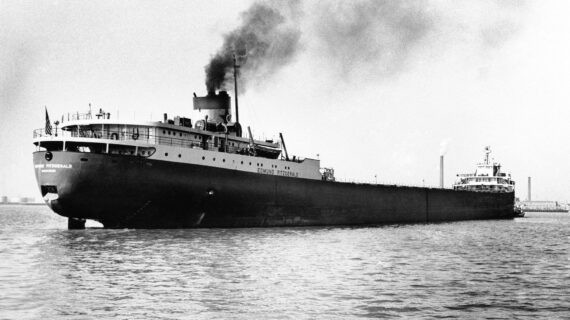
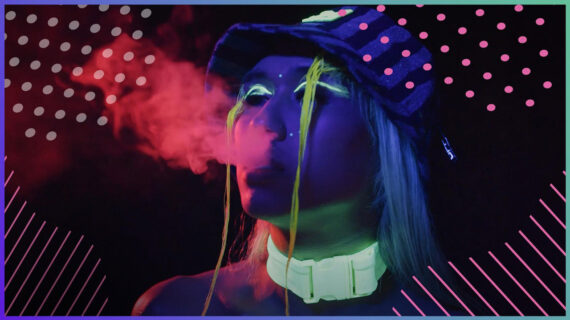
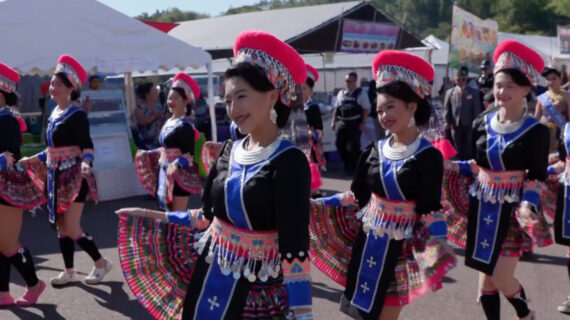

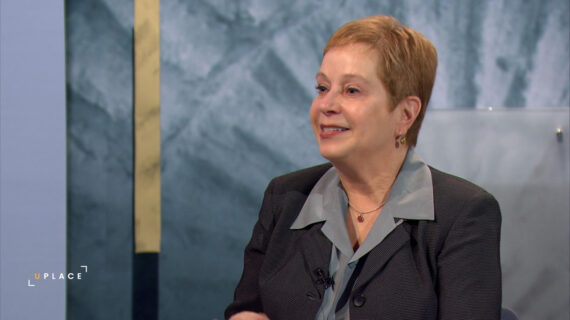
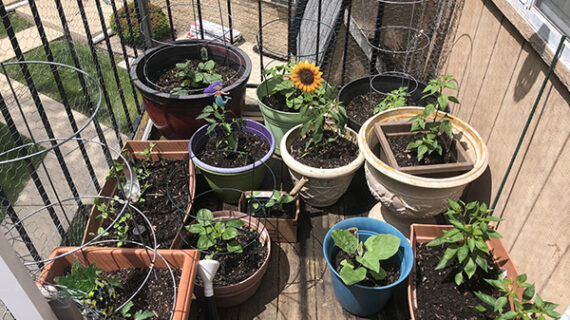


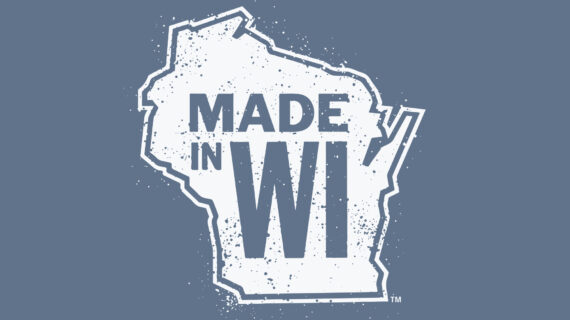
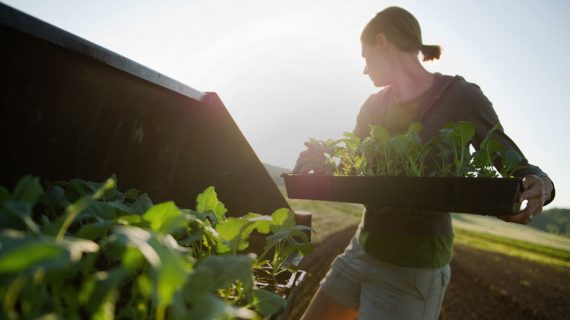
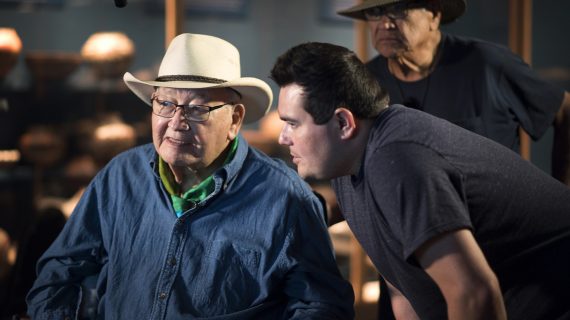


Follow Us